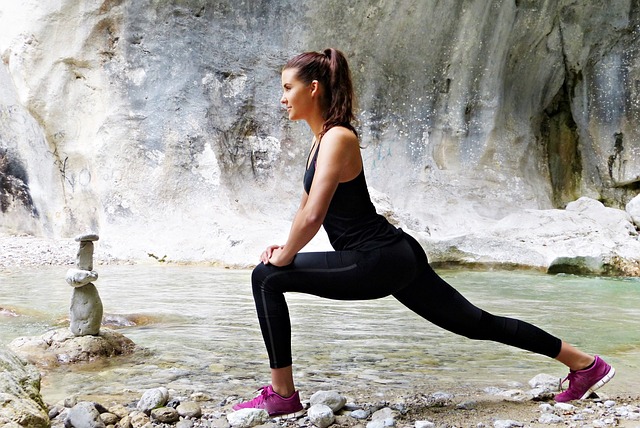Going for an outdoor exercise in nature may be as simple as putting on your favorite pair of running shoes and hitting the road. It can also be as simple as planning a multi-station strength training regimen for a group of family and friends in a park.
Whether you go simple or sophisticated, achieving a pleasant and efficient outdoor fitness workout boils down to adequate planning. Here are a few things you can look over to prepare properly before going outside for your next workout.
Choose the Outdoor Exercises You Wish to Do
The first stage in planning an outdoor workout is deciding what you want to do for exercise and then devising a detailed plan for doing it. The trick is to have your game plan ready before you go out the door. A haphazard strategy to incorporate a few bodyweight exercises into your jog will surely result in a mediocre program.
It can be helpful to write it down so you can recall it when you’re ready. For example, if you want to incorporate bodyweight exercises into your running program, plan out the activities you’ll undertake. Plan out how many sets and reps you’ll do, as well as how you’ll include them into your regimen.
A whole outdoor exercise could look like this:
- Warm up with a 5-minute moderate jog.
- 5 minutes of jogging at your desired pace (decide the pace before you start)
- Squats 20 times
- 5 minutes of jogging at your desired pace
- fifteen pushups
- 5 minutes of jogging at your desired pace
- 10 lunges while walking (per leg)
- 5-minute walk to unwind
If you want to perform yoga, don’t just pick poses at random when you’re outside. Instead, choose an audio or video workout to follow, or enter your flow into your phone to organize your practice ahead of time.
Even easy exercises like walking or jogging can be significantly improved if you organize your routine ahead of time. You’ll virtually always do less than you’re capable of if you don’t have a plan and a goal.
Choose a location
You can pick the best spot once you know what type of workout you want to undertake and which exercises you want to do. It’s analogous to finding a gym with all of the necessary equipment.
If you want a tranquil location to stretch or do yoga, for example, avoid playgrounds and the noise and bustle of busy kids. Choose a flat, grassy place near a peaceful route instead. Alternatively, if you want to practice bodyweight circuit training, find a site with a level surface for squats and pushups, benches or picnic tables for step-ups and dips, and a jungle gym for pull-ups or hanging leg lifts.
You might also choose a few locations that, when linked together, meet your requirements. Don’t overlook the value of space, shade, and access to park or playground features.
If you don’t enjoy carrying water, look for parks or walkways with water fountains. This keeps you hydrated while you attempt to enhance your fitness level.
Choose Your Equipment
Body weight workouts of all kinds are great for outdoor workouts, but they limit the number of exercises you can do and the level of resistance you can employ. You may eventually desire to use equipment other than what is readily available in most parks or playgrounds.
Perhaps you’d like to add an exercise ball to your post-run stretches or a light pair of hand weights to your upper-body routine. Plan out the equipment you’ll need and how you’ll get it to your outdoor training site.
If you plan to drive to the outside area, you can bring almost anything that will fit in your car. If you plan to walk or bike there, bring lightweight equipment such as resistance bands, jump ropes, and suspension trainers.
For example, you can carry a suspension trainer and a jump rope in your backpack on your jog or bike ride, or you can wrap a resistance band over your body sash-style from shoulder to hip, allowing you to keep your hands free without adding much thickness or weight. You can carry your own portable gym anywhere you go with a little foresight and innovation.
Examine the Weather
A terrific workout can be ruined at the drop of a hat if poor weather strikes. Even though the weather appears to be wonderful outdoors, always check the forecast before venturing out.
This can be accomplished by monitoring local news or using your preferred weather app. Some apps provide hourly play-by-play updates, allowing you to better plan your outdoor exercise workout.
Look for allergy warnings, pollution or UV warnings, wind chill, humidity levels, and heat indexes in addition to temperature. All of these variables can have an impact on how you feel when exercising.
Obtaining this additional knowledge also assists you in making smart selections regarding other factors. This includes what gear to wear, whether SPF protection is required, and whether it is even safe to exercise outside.
Dress Properly
What you should wear when exercising outside depends heavily on the weather. Here are a few insightful tips to keep you comfortable and safe:
Choose light-colored, lightweight, wicking fabrics that lift and remove perspiration and heat away from your body, keeping you cool and comfortable.
Dress in numerous layers if it’s cold outside so you can add and remove garments as needed during your workout. Select wicking, quick-drying materials. To keep warm, wear headbands, hats, gaiters, and gloves.
If it’s raining, don’t overlook the need for waterproof clothing. Even in warm weather, wear a lightweight rain jacket and shoes that are water-resistant or waterproof. You’ll appreciate your workout much more if you don’t have to deal with moist socks and wet apparel. Consider wearing a brimmed hat to keep the rain out of your eyes.
Daytime workouts require UV protection, whether the weather is hot, cold, wet, or bright. Apply sunscreen on your exposed skin to protect it, but don’t stop there. Use sunglasses and a hat wherever you go outside, and if your workouts go longer than the 80 minutes that most sports sunscreens cover, consider wearing UPF-protective clothing to cover your arms and legs. Finally, keep SPF-rated chapstick on hand for when you need it.
Be Prepared for Unexpected Problems
Exercise is always dangerous, and outdoor workouts are no exception. While there is no need to be particularly cautious about hitting the trails or heading to the park, you should be aware of potential hazards.
You could twist your ankle while running on a trail, collide with an unrestrained dog, or become disoriented in an unfamiliar part of town. You can negotiate dangers, injuries, and other dangerous circumstances more efficiently if you plan ahead of time.
Here are a few pointers:
Always keep your phone with you. Not only does it have the benefit of being able to contact you for assistance if necessary, but your phone also has other features, such as GPS tracking and mapping, which are useful if you become disoriented. Even if your phone doesn’t have service where you are, if you are lost or injured, rescuers can use your phone to assist them in finding you.
Bring cash as well. Having a few dollars on you means that you can stop at a quickie mart for a bottle of water or a candy bar if your blood sugar drops.

Before you go, notify a friend. It is vital to keep a loved one informed of your whereabouts. Even if you’re merely going to a nearby park, let someone know where you’re going and when you expect to return. If you’re planning to go on an adventure, tell a friend you’ll check in with them after you’re finished. They’ll know when and where to look if they don’t hear from you.
Consider a dog (if you have one). Dogs require exercise as well, so bring your four-legged buddy with you when you are ready for outdoor exercise. In addition to bonding with your pet via exercise, the presence of a dog can dissuade outsiders from pestering you. Extra points if your dog is large and powerful.
To Conclude
One of the most enjoyable aspects of exercising outside is being able to admire Mother Nature. Don’t get too caught up in your workout that you forget to take a break and look around.
Take in some fresh air and pay attention to the trees, flowers, and streams. Let yourself be thankful for your surroundings and ability to move. The more enjoyable your outdoor exercise, the easier it will be to keep to your exercise routine.


